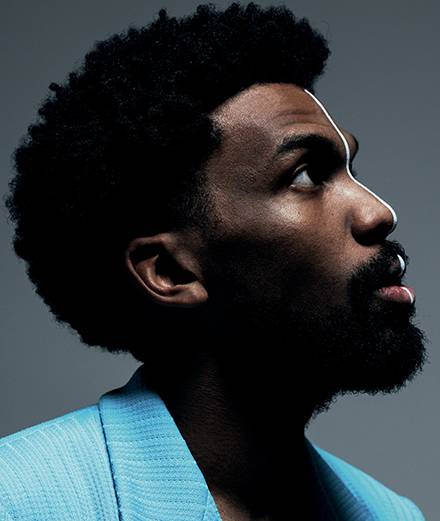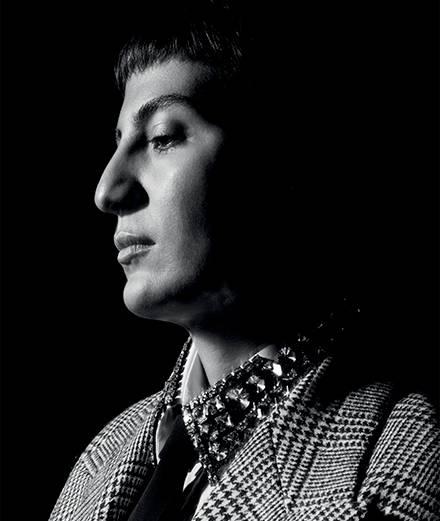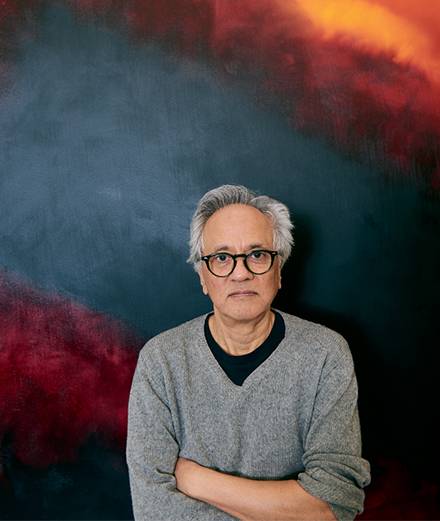For many years, Raf Simons has collaborated on exclusive textiles with the Danish brand Kvadrat. This month he introduces three new models: Pulsar, Reflex and Fuse, which round out the existing collection. Numéro took advantage of this occasion to speak with the Belgian designer about his passion for furniture and industrial design.
Numéro : You studied industrial design— do you think about getting back to that one day?
Raf Simons : I have always thought that designing objects was a wonderful job. I moved away from it because it’s a bit isolating. But working in the fashion industry, with a rhythm that has only accelerated over the past few years, has given me a desire to return to it. It really made sense to me.
You used some of the fabrics that you produced for Kvadrat in your fashion collections. For you, what is the relationship between these two activities?
I think there is a mutual influence. Kvadrat is a beautiful brand with an interesting heritage. It’s a company that allows itself the time necessary to develop its products. To me, that’s very important. The technical demands of fabrics for furniture are of course very different from the demands in fashion. In one sense, there are greater constraints for furniture, because the textiles need to be resistant. But it’s wonderful to think that those fabrics are created to last. That’s Kvadrat’s attitude, and it’s also mine. We produce three fabrics per year. Its very satisfying to develop a collection that grows little by little, without going out of style, and incorporating new works. One needs to be coherent, but also innovative in terms of structure and color.
You are famous in the fashion world for your use of color. Was this a jumping-off point in your work with Kvadrat?
Yes, that was one of the starting points. I liked the idea of looking at color differently. When I started to suggest introducing bold colors, I was working for Jil Sander, a brand that is not really associated with color because its codes are black, navy blue, white and camel. But the more I became accustomed to the rhythm of the fashion world, the more I was attracted to nature. And that totally changed my perception of color. Looking closely at flowers, for example, I realized that they were made up of a wide range of colors. I thus began to conceptualize color in a very different way, juxtaposing, for example, two complementary colors. In the world of textiles for furniture, one must be very careful with this kind of color game, of course. I’m passionate about furniture, have always closely followed the evolution of design, and was often skeptical of the use of bright colors. In the world of furniture, it’s really a delicate balance. I have tried to keep this in mind in my work for Kvadrat, to strike the right balance between classicism and experimentation.
The artist Sterling Ruby has worked with you on one of your collections. What do you think about his own work with fabric?
I am very interested by the way in which he uses fabrics in his work. He began by removing color from some fabrics, and then started dyeing them. He may wash them out, or paint them. Textiles are central to his self-expression.
In your collaboration with Kvadrat, have you ever wanted to work with more valuable fabrics, as in haute couture, or have you been excited to produce something a bit more industrial?
I absolutely did not want to make “arty” fabrics; I wanted to produce textiles that would compliment industrial design. Currently, I’m interested in French and Italian pieces from the 1950s and ‘60s. Modernism was radical in terms of form, but not very radical in terms of textiles. That’s why Cassina, for example, has used my fabrics in the re-editions of their vintage pieces.
Why are you also producing cushions? Was object-design important for you?
I’ve collected furniture for over a dozen years, and it’s really one of my passions. I am fascinated by the precious objects produced by galleries today, but over time I’ve come to the conclusion that I prefer functional pieces. I remain faithful to the design of the 1950s. And I am very interested in the way in which we live in the domestic sphere. I’m even quite romantic in that way. If people think I have an arty or distant attitude, they clearly have the wrong impression of me. I love fires in the chimney, cushions, blankets and sofas.

















